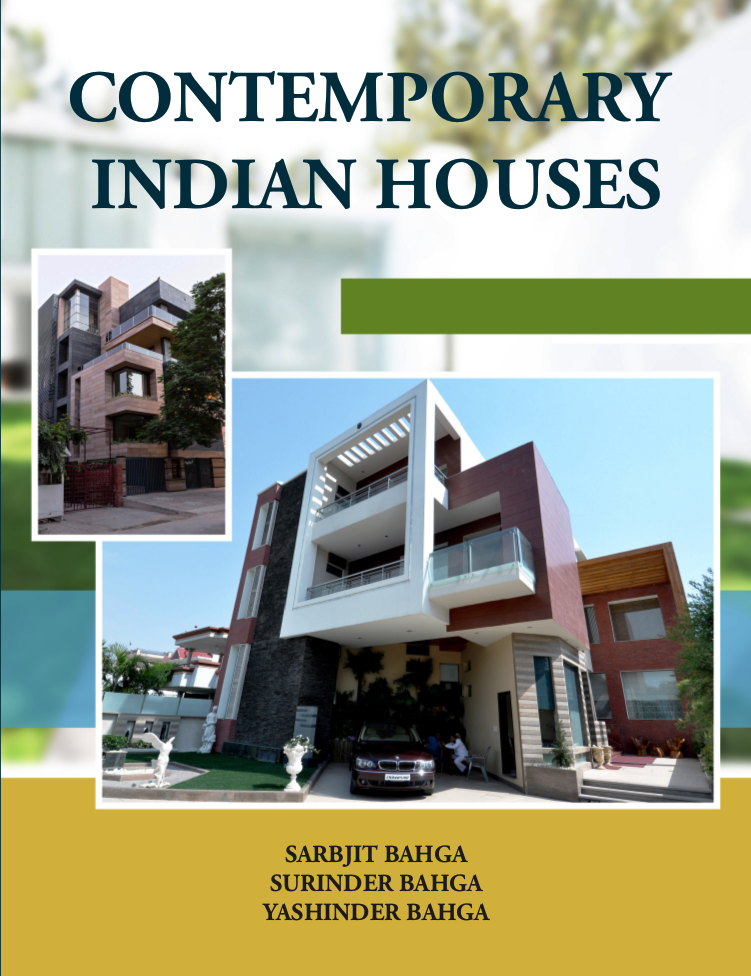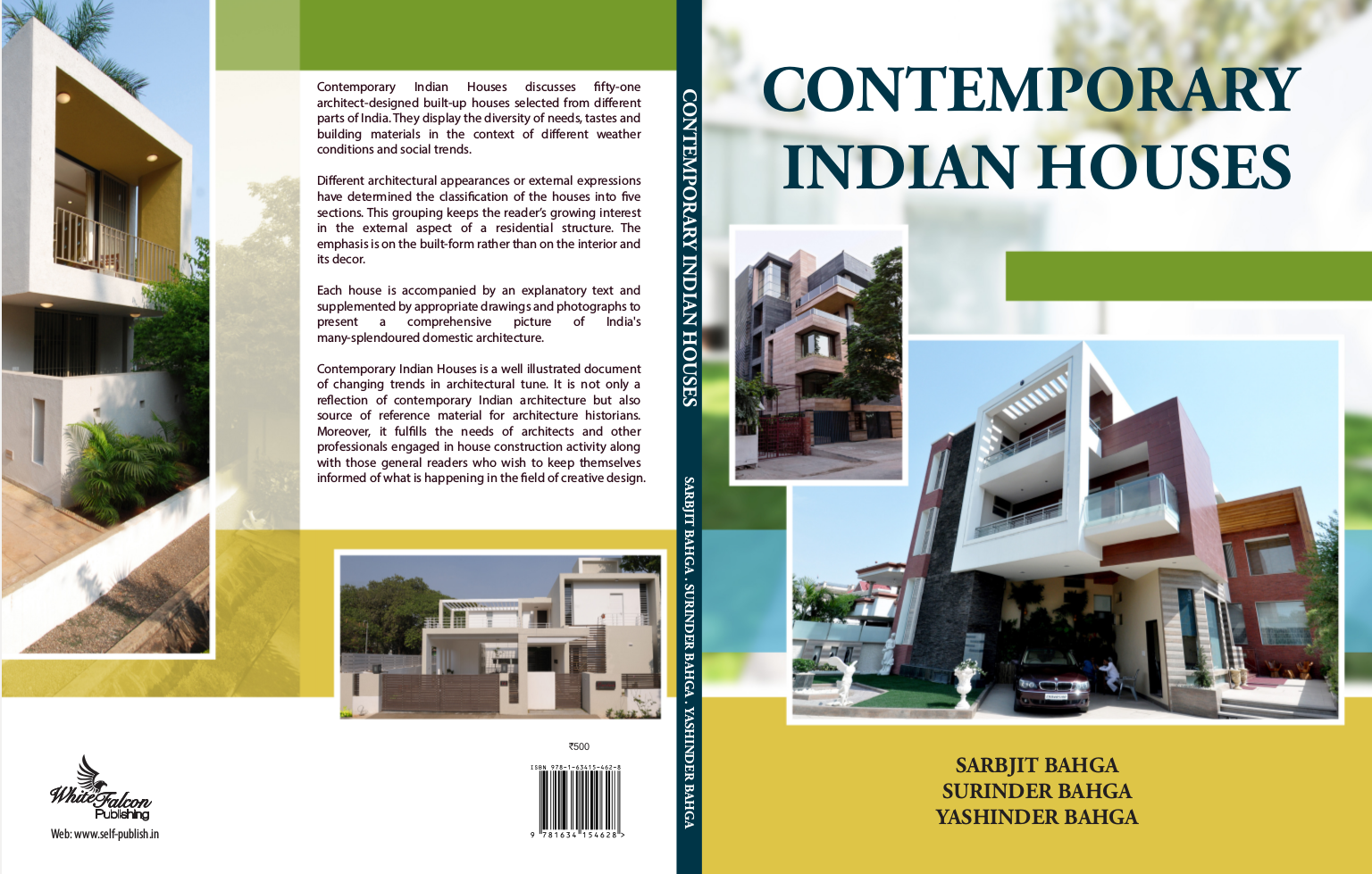Submitted by WA Contents
Book Review:Contemporary Indian Houses
United Kingdom Architecture News - Jan 06, 2015 - 09:38 7793 views

Since times immemorial man has always needed shelter for protection against inclement weather and security in a hostile environment. Using his ingenuity and resources, he has fulfilled his needs, provided himself with comfort, rest, privacy, relaxation, freedom of action and facilitated social interaction among family members. A shelter or house is thus a physical manifestation of the life-styles of people, their skills and technological achievements and sensitivity to built-forms. In the contemporary context it expresses the creativity of the architect and emergence of a new coherent architectural style. Domestic architecture as compared to other types of architecture incorporates more intelligently and clearly the aspirations of people, their social needs and ways of life. Crucially, it reflects the development of trends in house design.
Contemporary Indian Houses is a well illustrated document of changing trends in architectural tune. It is not only a reflection of contemporary Indian architecture but also source of reference material for architecture historians. Moreover, it fulfills the needs of architects and other professionals engaged in house construction activity along with those general readers who wish to keep themselves informed of what is happening in the field of creative design. For instance, before getting their houses designed prospective house owners, particularly the urban elite, would find in this publication interesting material on the latest trends in domestic architecture.
In order to give shape to their abstract ideas or have access to wider range of house designs and building materials available, they are always in search of relevant information, be it in books, popular magazines or professional journals on architecture and house design. Unfortunately very little material which can be productively used is available. However, what is available has relevance mainly in the foreign context and contains information regarding unbuilt houses which is irrelevant to our climatic and social conditions. This material is very often in the form of magazines or architecture digests containing glossy pictures of the interiors of lavishly furnished houses. However, the lack of explanatory drawings or photographs of the external aspect of the built-forms makes these glossy visuals serve no purpose. In India few journals of architecture and design have tried to fill this lacuna but the result is not satisfactory because the material is scattered and it is difficult for a general reader to have access to it or collect it. Consequently, there was a need for book containing a representative range of house designs.
Contemporary Indian Houses discusses fifty-one architect-designed built-up houses selected from different parts of India. They display the diversity of needs, tastes and building materials in the context of different weather conditions and social trends.
Different architectural appearances or external expressions have determined the classification of the houses into five sections. This grouping keeps the reader’s growing interest in the external aspect of a residential structure. The emphasis is on the built-form rather than on the interior and its décor. Each house is accompanied by an explanatory text and supplemented by appropriate drawings and photographs to present a comprehensive picture of India's many-splendoured domestic architecture.
The houses shown in this book illustrate well the rationale and aesthetic vision of the different approaches to house-design. Each house has its own central theme and distinct individuality which have been underlined in the text as well as in the captions. It is hoped that prospective house owners, architects and other professionals involved in building houses will find this book useful not only as an index of architectural styles and construction materials but also as a point of departure for evolving a built-form which is illustrated by structural fluidity and harmony.
Renowned Architect Christopher Charles Benninger has written Foreword to this book. In his words, “Building houses is the most civilizing activity of man and it is through such endeavours that historians and archaeologists attempt to understand the very essence of culture. Contemporary Indian Houses is a document of our times which expresses the social and geo-climatic conditions of the subcontinent. This volume covers a wide range of architecture and locales and represents the creations of an eclectic group of architects. Through the case studies a collective image takes shape in one’s imagination.”
He further adds, “It is my hope that as new and younger architects take over the mantle from us, they will express creatively this greater vision of their apparently miniature efforts. These are not just the homes of individuals; these are the dreams of a civilization. Let us see in these works not only the self-conscious exhibits of individualists but also a celebration of what is mundane in our daily lives and whimsical in our natures. It is within the strains of these whims that a subtle poetry lies. And this poetry is a significant part of India’s unique gift to the world.”

Authors:Sarbjit Bahga, Surinder Bahga, Yashinder Bahga
Language: English
Pages: 164
Size: 8.5”x11” (Paperback)
ISBN-10: 1505561310
ISBN-13: 978-1634154628
Publishers:White Falcon Publishing
Available on:WA Books
